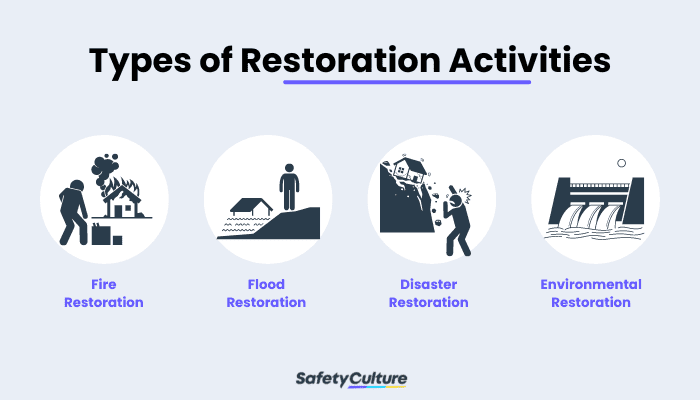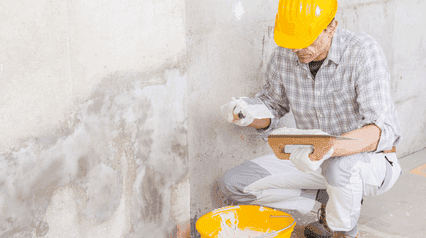What is Restoration?
Restoration refers to any action or process used to repair, re-establish, or renew tangible assets such as buildings and equipment or intangible assets like stocks. The process usually occurs after an event that damages an organization’s property. This could be a flood or fire that destroys parts of the facility, equipment malfunctions that lead to equipment damage, or restoring the environment after mining activities in a certain area.
Why Is It Important?
When running an organization, you never know what you’re going to deal with. Sometimes, organizations have to deal with certain disasters and events that damage their assets. This could be a fire, storm, flood, or incident that sees the value of certain assets plummet.
Restoration is the process of bringing the facility and assets back to their state before the event. This is very important as it allows businesses to get back on their feet and proceed with regular operations. This is also why certain companies specialize in restoration services that help organizations recover from certain events.
While the restoration process can cost the organization money in the short term, it also allows them to go back to normal operations, bringing in more income and growing the business as a whole. Basically, it gives certain facilities, equipment, and organizations a second chance that they may not receive without restoration. For example, after directional boring operations, land restoration is performed.
Additionally, restoration is a way for organizations to reduce waste. Not only does this improve the organization’s sustainability, but also it allows them to cut down on costs in the long run by restoring its assets instead of spending to fully replace them. Having restoration protocols and strategies in the event of disasters and other events is a great way for organizations to keep themselves afloat.
Streamline Your Construction Operations
Unlock the power of data-driven insights, standardized processes, and effective communication to improve efficiency and productivity across all jobsites.
Explore Our Construction Operations SolutionTypes of Restoration Activities
There are many types of restoration that organizations may perform depending on what they are looking to restore and why they are looking to restore it. Here are some of the most common types of restoration that organizations perform:

Types of Restoration Activities | SafetyCulture
Fire Restoration
Fire restoration refers to the process of restoring a facility after a fire. This includes removing any leftovers from the event, such as soot, smoke, and burnt materials. From there, restoration teams do a proper damage assessment and apply the necessary solutions to get the facility back to 100 percent, whether by repairing structures that were damaged or servicing any equipment that was affected by the fire.
Flood Restoration
Floods can cause a lot of damage to a facility, making water damage a serious concern for many organizations.
Flood restoration is the process of returning the facility to a pre-flood state by reparenting equipment, fixing damaged structures, and putting more controls in place to reduce further potential water damage. This process allows regular operations to proceed in the previously damaged facility.
Disaster Restoration
Disaster restoration is the process of restoring a facility after a natural disaster. These disasters include storms, earthquakes, and other natural calamities that may cause significant damage to a facility and organization.
Environmental Restoration
Some industries carry out processes that can damage the environment. For example, mining activities can take a huge toll on the environment and leave the ecosystem in an unnatural state.
Environmental restoration involves restoring the site to the state before organizations have conducted operations. This may include reforesting, clean-ups, and more.
How Do Organizations Perform Restoration?
Every organization has its own approach to restoration. The way organizations perform this process may vary depending on the type of restoration, the size of the organization, and other factors.
Regardless of the type of restoration, the process always begins with a damage assessment. This involves the following steps:
- Conducting a comprehensive inspection of the damaged site and equipment
- Documenting everything that will need to be repaired and restored
- Outlining how the team may approach the restoration
Once the assessment is complete, teams will then create a strategy. This should include the specific processes they will use to bring the facility back to its original state, the equipment needed, and all other necessary details. From there, the team proceeds with the restoration according to the initial inspection and the overall strategy.
Create Your Own Restoration Inspection Checklist
Eliminate manual tasks and streamline your operations.
Get started for FREE
When the restoration is complete, it’s also important for organizations to closely monitor the state of their facilities and ensure that the restoration process was done properly. And if there were any lapses or mistakes, it’s crucial for teams to correct them right away.
FAQs about Restoration
Construction involves building new structures from scratch. Restoration, on the other hand, involves bringing a damaged or old facility back to its original state. While this might involve some construction, restoration doesn’t involve building entirely new facilities.
Restoration is the process of fixing certain things to restore a facility or equipment back to its original state. Remodeling involves completely changing the structure and form of a facility, while renovation involves upgrading facilities and areas while also restoring certain aspects.
As long as the structure isn’t damaged too much, it can be restored. This includes walls, floors, doors, windows, rooms, and entire buildings.
The approaches to restoration include preservation, rehabilitation, restoration, and reconstruction. They are commonly used when restoring historic structures.




